Types of Food
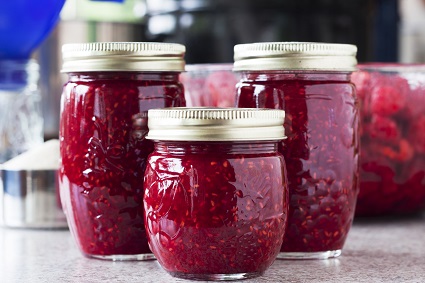
Learn more about the types of food that can (and cannot) be sold as homemade food in Alaska.
- Questions about homemade food?
- Send us an email at dec.fss.homemade.food@alaska.gov.
On This Page
About Homemade Food
Homemade food is a category of food products that are produced in homes or leased kitchens and can be sold in Alaska without permitting or inspection. These types of food products are sometimes called "cottage food."
There are specific types of food that can be sold as homemade food in Alaska. The homemade food rule describes the types of food products that are allowed, the methods for selling those products, and the locations where they can be sold.
The homemade food rule only addresses food produced in homes or privately leased kitchens. There are additional permitting and inspection exemptions included in the Alaska Food Code and the regulations for dairy, seafood, and other types of food produced in Alaska.
Examples of the Types of Food Included in Alaska's Homemade Food Exemption
This list describes the types of food that can be produced and sold as homemade food in Alaska. The method and location for selling homemade food depends on the type of food being sold. See Requirements for Selling for more information.
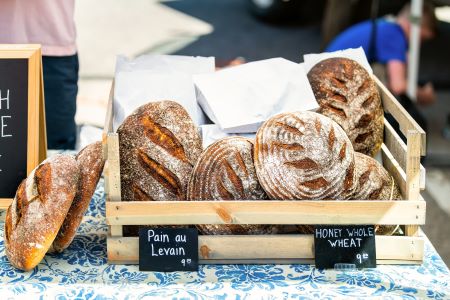
Non-Potentially Hazardous Food
Description: Foods that do not require time or temperature control to be safe for people to eat
Examples: Cookies, sourdough bread, fudge, jams and jellies, vinegar, pickled vegetables
Locations and Methods of Sale: See Selling Non-Potentially Hazardous Food
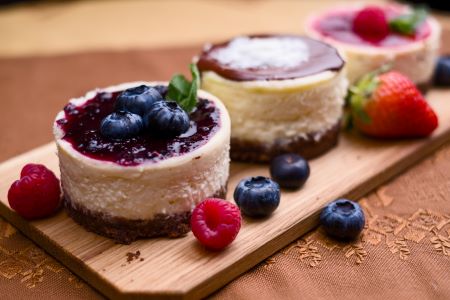
Potentially Hazardous Food
Description: Foods that only last for a certain amount of time or must be held at a certain temperature to ensure they are safe to eat; sometimes called time/temperature control for safety (TCS) foods
Examples: Cheesecake, lemon meringue pie, cut melon, sausage, frozen chicken casserole, salad mix
Locations and Methods of Sale: See Selling Potentially Hazardous Food
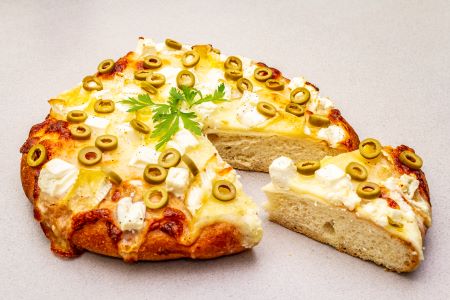
Food That Contains Milk or Milk Products
Description: Foods that contain milk, milk products, raw milk, or raw milk products (from a cow, goat, sheep, or other ruminant)
Does Not Include: Producing or selling pasteurized milk or milk products from raw or unpasteurized milk; producing or selling raw milk or raw milk products; milk from an animal that is not a cow, goat, sheep, or other ruminant
Examples: Ice cream cake, cheesecake, baked custard pie, cheese-stuffed bread
Potentially Hazardous Food? Yes
Locations and Methods of Sale: See Selling Potentially Hazardous Food
Milk Products Produced from Pasteurized Milk
Description: Milk products such as cheese, butter, kefir, yogurt, ice cream, and boiled custard (egg nog, frozen custard) that are produced from pasteurized milk (from a cow, goat, sheep, or other ruminant)
Does Not Include: Producing or selling pasteurized milk or milk products from raw or unpasteurized milk; producing or selling raw milk or raw milk products; milk from an animal that is not a cow, goat, sheep, or other ruminant
Examples: Vanilla ice cream, salted butter
Potentially Hazardous Food? Yes
Locations and Methods of Sale: See Selling Potentially Hazardous Food

Food That Contains Meat or Meat Products
Description: Foods that contain meat or meat food products (from cattle, goats, sheep, swine, and catfish) that were produced under USDA inspection
Does Not Include: Uninspected or inspection-exempt meat; producing, slaughtering, or selling whole livestock or parts of livestock; nonamenable species; game meat
Examples: Charcuterie board, taco salad with ground beef, cold ham sandwich
Potentially Hazardous Food? Yes
Locations and Methods of Sale: See Selling Potentially Hazardous Food
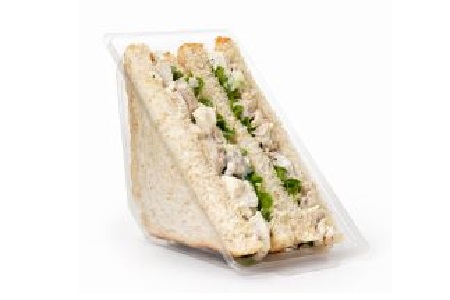
Food That Contains Poultry or Poultry Products
Description: Foods that contain poultry or poultry products (from domesticated chickens, turkeys, ducks, geese, ratites, and squabs) that were produced under USDA inspection or were produced under a USDA poultry inspection exemption and used according to the exemption's requirements
Does Not Include: Producing, slaughtering, or selling whole birds or poultry parts; nonamenable species; game meat
Examples: Chicken salad, frozen chicken and broccoli casserole, cold turkey sandwich
Potentially Hazardous Food? Yes
Locations and Methods of Sale: See Selling Potentially Hazardous Food

Eggs
Description: Eggs that were laid by a domesticated chicken, turkey, duck, goose, guinea, or quail
Does Not Include: Eggs from wild birds
Potentially Hazardous Food? Yes
Examples: Carton of one dozen eggs, tray of 36 eggs
Locations and Methods of Sale: See Selling Eggs
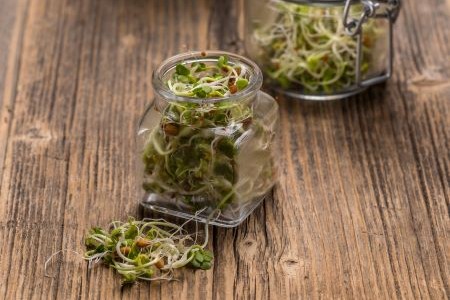
Raw Seed Sprouts
Description: The immature shoots of germinated seeds
Examples: Alfalfa sprouts, broccoli sprouts, clover sprouts, radish sprouts
Potentially Hazardous Food? Yes
Locations and Methods of Sale: See Selling Potentially Hazardous Food
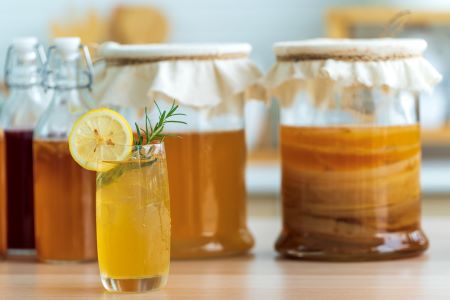
Kombucha
Description: A fermented drink that is produced using tea, sugar, bacteria, and yeast; additional flavoring is sometimes added
Examples: Kombucha tea, lemon-flavored kombucha
Potentially Hazardous Food? Variable, refer to Determining Non-Potentially Hazardous Food
Locations and Methods of Sale: Variable, depends on whether the food is potentially hazardous or non-potentially hazardous
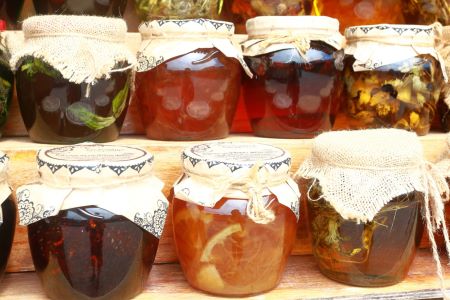
Processed Honey
Description: Honey that has been processed, usually by filtering, pasteurizing, or adding flavors
Examples: Filtered honey, lavender-infused honey, herb honey
Potentially Hazardous Food? Variable, refer to Determining Non-Potentially Hazardous Food
Locations and Methods of Sale: Variable, depends on whether the food is potentially hazardous or non-potentially hazardous
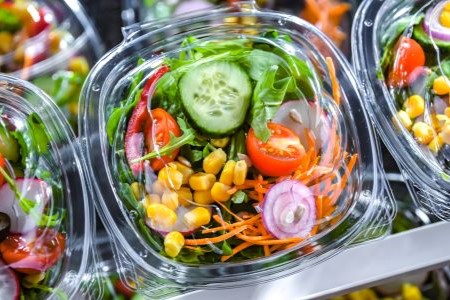
Processed Fruits and Vegetables
Description: Produce that has been processed by peeling, slicing, shredding, coring, etc.; produce that has been processed to make juice; produce that has undergone any kind of heat treatment (cooking, boiling, grilling, etc.)
Does Not Include: Pickled or acidified vegetables
Examples: Chopped salad mixes, cut melon, carrot juice, canned green beans, boiled peanuts
Potentially Hazardous Food? Yes
Locations and Methods of Sale: See Selling Potentially Hazardous Food
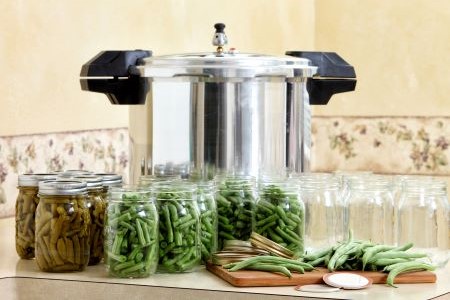
Food Processed by Home Canning
Description: Foods that have been preserved using a tested and proven recipe and canning method (commercial sterility is achieved)
Examples: Canned green beans, canned tomato sauce
Potentially Hazardous Food? No
Locations and Methods of Sale: See Selling Non-Potentially Hazardous Food; if it contains meat or poultry, it must be sold according to the requirements for potentially hazardous food
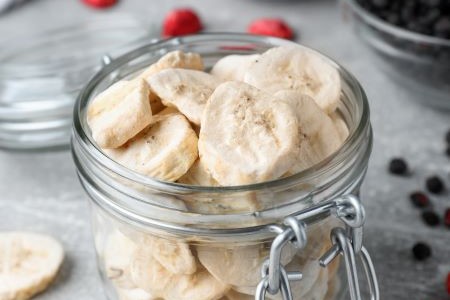
Food Processed by Drying, Dehydrating, and Freeze Drying
Description: Foods that have had their water content reduced through drying, dehydration, or freeze drying; these foods may be potentially hazardous or non-potentially hazardous depending on the water activity in the final product
Examples: Dried berries, freeze-dried banana pieces
Potentially Hazardous Food? Variable, refer to Determining Non-Potentially Hazardous Food; if it contains meat or poultry, it must be sold according to the requirements for potentially hazardous food
Locations and Methods of Sale: Variable, depends on whether the food is potentially hazardous or non-potentially hazardous; it must be sold according to the requirements for potentially hazardous food
Food That Cannot Be Sold As Homemade Food
The sale of these items is not included in Alaska's homemade food exemption. The food may be exempt from permitting and inspection requirements in a different regulation, but not as part of the homemade food exemption.
- Milk or milk products that involve raw or unpasteurized milk
- Meat or meat food products
- Poultry or poultry products
- Game meat or food that contains game meat
- Seafood or food that contains seafood
- Shellfish or food that contains shellfish
- Reindeer or reindeer meat products
- Nonamenable species or products of nonamenable species
- Food that contains uninspected or inspection-exempt meat
- Food that contains uninspected or inspection-exempt poultry
- Food that contains products of nonamenable species
- Oils rendered from animal fat or food that contains those oils
- Controlled substances or food that contains controlled substances
- Milk or milk products that involve raw or unpasteurized milk
-
- Producing milk and milk products (butter, cheese, kefir, yogurt, ice cream, boiled custard, etc.) for people to eat using a milk source that is raw or unpasteurized is regulated by the Office of the State Veterinarian
- Producing raw milk and raw milk products for people to eat is regulated by the Office of the State Veterinarian
- Regulations for milk and milk products are separate from the homemade food exemption
- Meat or meat food products
-
- Producing, slaughtering, and selling whole livestock and parts of livestock (legs, quarters, shoulders, roasts, etc.) for people to eat is regulated by USDA
- USDA has its own inspection exemptions for producers and sellers of meat and meat products
- Poultry or poultry products
-
- Producing, slaughtering, and selling whole poultry and parts of poultry (thighs, quarters, wings, etc.) for people to eat is regulated by USDA
- USDA has its own exemptions for producers and sellers of poultry and poultry products; these exemptions are adopted in the Alaska Food Code and are separate from the homemade food rule
- Game meat or food that contains game meat
-
- Game meat may not be sold as homemade food
- Game meat may not be used in food that is sold as homemade food
- Alaska's list of game animals includes (but is not limited to) bears, caribou, deer, elk, fox, grouse, moose, polar bears, ptarmigan, seals, squirrels, walrus, waterfowl, and whales
- Seafood or food that contains seafood
-
- Seafood or any food that contains seafood may not be sold as homemade food
- Seafood includes salt-water fish, freshwater fish, amphibians, crustaceans, mollusks, and any other aquatic animal or byproduct intended for people to eat
- Shellfish or food that contains shellfish
-
- Shellfish or any food that contains shellfish may not be sold as homemade food
- Shellfish includes fresh or frozen oysters, clams, mussels, and scallops that are intended for people to eat
- Reindeer or reindeer meat products
-
- Producing, slaughtering, and selling whole reindeer and parts of reindeer (legs, quarters, etc.) for people to eat is regulated by the Alaska Department of Environmental Conservation
- The Alaska Food Code has its own exemptions for producers and sellers of reindeer meat and reindeer meat products; these exemptions are separate from the homemade food rule
- Nonamenable species or products of nonamenable species
-
- Producing, slaughtering, and selling products from nonamenable species for people to eat is not included in the homemade food rule or the Alaska Food Code
- Alaska's list of nonamenable species includes (but is not limited to) alligators, antelope, bears, bison, caribou, crocodiles, deer, elk, emu, fox, grouse, lizards, moose, musk oxen, ostrich, pheasant, polar bears, quail, rabbits, rhea, seals, snakes, squabs, squirrels, turtles, walrus, waterfowl, water buffalo, and whales
- Food that contains uninspected or inspection-exempt meat
-
- All meat and meat products used in homemade food must be from a source inspected by USDA
- Food that contains uninspected meat or meat products may not be sold as homemade food
- Food that contains inspection-exempt meat or meat products may not be sold as homemade food, even if the source is operating under a USDA inspection exemption
- Food that contains poultry that was not inspected or produced under an inspection exemption
-
- All poultry and poultry products used in homemade food must be from a source inspected by USDA or produced under a USDA poultry inspection exemption and used according to the requirements of that exemption
- Food that contains products of nonamenable species
-
- Food that contains products of nonamenable species may not be sold as homemade food
- Alaska's list of nonamenable species includes (but is not limited to) alligators, antelope, bears, bison, caribou, crocodiles, deer, elk, emu, fox, grouse, lizards, moose, musk oxen, ostrich, pheasant, polar bears, quail, rabbits, rhea, seals, snakes, squabs, squirrels, turtles, walrus, waterfowl, water buffalo, and whales
- Oils rendered from animal fat or food that contains those oils
-
- Oils rendered from animal fat may not be sold as homemade food, this includes lard, tallow, and suet
- Oils rendered from animal fat may not be used in food that is sold as homemade food
- Examples include seal oil, whale oil, and bear tallow
- Controlled substances or food that contains controlled substances
-
- Controlled substances or any food that contains a controlled substance may not be sold as homemade food
Local Requirements
Cities, boroughs, military installations, and other local jurisdictions in Alaska may have additional requirements for selling homemade food in their communities. This includes the Municipality of Anchorage. Be sure to check local requirements prior to selling homemade food.
Statutory Reference
- AS 17.20.332 Exemption for Homemade Food
Resources and Contacts
Resources
- Requirements for Selling
- Information about the requirements for selling homemade food in Alaska
- Determining Non-Potentially Hazardous Foods
- Information about using pH and water activity (aw) to determine if a food is non-potentially hazardous
- Guide to Operating a Successful Home-Based Food Business
- A publication of the Cooperative Extension Service in partnership with the Department of Environmental Conservation
- National Center for Home Food Preservation
- Recipes, guidance, and other resources for preserving and processing food at home with a focus on food quality and safety
- Selling Eggs
- Information about safely selling eggs in Alaska
- Mail Order Food Safety
- Recommendations from the USDA for sending food safely in the mail
- Made in Alaska
- Information from the Department of Commerce, Community, and Economic Development about the Made in Alaska program
- Non-Timber Forest Product Commercial Harvest Permit
- Information from the Department of Natural Resources about obtaining a limited non-timber forest product commercial harvest permit
Contacts
- Food Safety and Sanitation
- Send us an email at dec.fss.homemade.food@alaska.gov
- Cooperative Extension
-
- 308 Tanana Loop, Room 101
- P.O. Box 756180
- Fairbanks, Alaska 99775
- 907-474-5211
- ces@alaska.edu
- Environmental Health Laboratory
-
- 5251 Dr. Martin Luther King, Jr. Avenue
- Anchorage, Alaska 99507
- 907-375-8200
- DEC.EH-Lab-ShippingReceiving@alaska.gov

 Indicates an external site.
Indicates an external site.